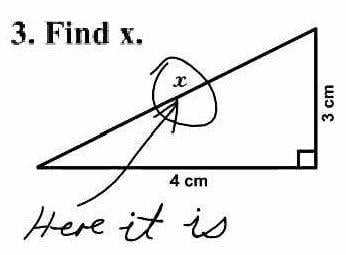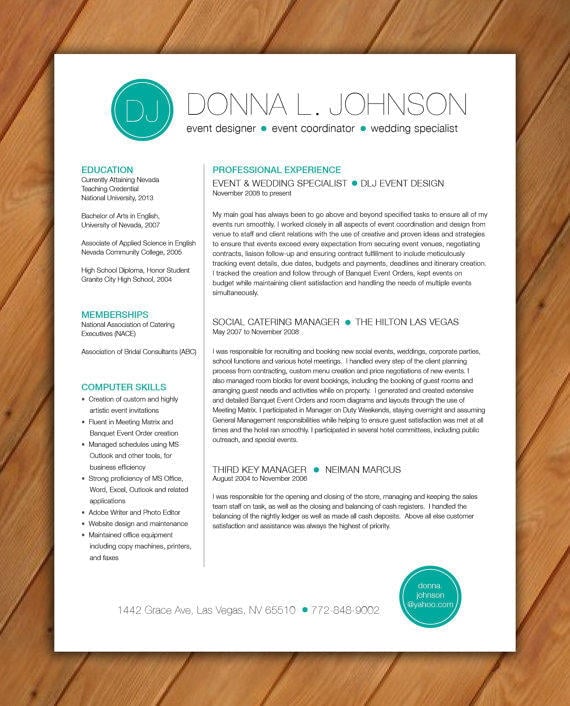
I’m not going to mince words: Hiring kind of sucks.
First, if I’m hiring for a marketing role, that usually means someone on my team is moving on, and that’s bittersweet. It’s great to see people I’ve worked with grow and try new things, but it’s also sad to see them go. Second, and worse, hiring takes up a ton of time. It can be so hard to find the right person!
In my time at WordStream, I’ve reviewed HUNDREDS of marketing resumes, some better than others. Some a LOT better than others.
If you want to get hired for a marketing job, you need to make sure your resume immediately stands out, because the hiring manager is busy and frustrated and doesn’t have time to grant everyone a phone screen.
Here are nine simple ways to improve your marketing resume and increase your chances of getting an interview.
1. Add stats & figures
When reviewing marketing resumes, hiring managers want to see hard evidence of strong performance. So take a look back at the work you did in your last or current role and make sure you quantify your successes.
Math: Anyone can do it!
Examples of stats you might include:
- Growth in site traffic thanks to your work on SEO or social media campaigns
- Growth in email subscribers or increases in email open rates
- Conversion rate improvements through landing page optimization or other tests
- Reduction in cost per action or cost per acquisition
The same way that numbers improve CTR in ad headlines, they stand out from all the verbiage on a resume and show that you’re results-driven.
2. Use a striking resume template
Chances are, at any given moment, your hiring manager’s eyes are glazing over with the boredom of reviewing dozens of resumes in a row that all look the same. Especially if your experience isn’t absolutely stellar or perfectly aligned with the role, you can get your resume noticed by using a striking resume format.
Some design elements that can help you stand out from the other marketing resumes include:
- Use of color – Don’t go crazy; the main text of the resume should be black. But in the marketing world, a little color (keep it refined!) is better than strict black and white throughout. (I wouldn’t say this is true if you’re applying for a technical job or something in law or medicine.) Below is an example of a resume that makes good subtle use of color.
- Use of fonts – Different fonts for headings and body text improve readability and the overall look of your resume. But again, don’t choose anything too “creative.” Check out Canva’s guide to the best and worst fonts for resumes.
- A two-column design – This can help you put a little more information on the page without things looking too cluttered, and it’s often easier to read (this is why print magazines use columns).
Depending on the role, attractive resume formatting could just be a nice-to-have or it could be critical. If you’re applying for a job in design, your resume is effectively part of your portfolio, so don’t take shortcuts. Make it count.
If you don’t know where to start, you can find free marketing resume templates on the web; try these ones from HubSpot or LiveCareer.
3. Sharpen up your skills section
Most resumes include a section that lists your skillsets, but I’ve seen plenty of marketing resumes where it was a total waste of space. Mastery of Microsoft Office is pretty much a bare-minimum skill for any marketing job, so think bigger.
Most importantly, make sure the skills you list are relevant to the marketing job you’re applying for. A good third of the resumes I get don’t even use the words in the job title anywhere on the resume! This is a terrible idea, because it makes it look like you’re just carpet-bombing people with your resume and didn’t bother to read the job description. Plus, some companies use screening software, meaning if your resume doesn’t include certain keywords, a real person won’t ever even look at it.
In particular, hiring managers are going to be looking for three things:
- Proficiency in specific channels/techniques – List any broad or channel-specific marketing skills you have, such as PPC, content marketing, lead nurturing, public speaking, video editing, web design, mobile marketing, data visualization, etc. Again, make sure you include the skills required in the job description (if the job title is “SEO Manager,” your resume should include skills relevant to SEO, like link building and keyword research). But include your other marketing skills too; you never know what additional skills the company might consider to be a bonus.
- Proficiency in specific tools/software platforms – List all the tools/software that you use to accomplish the above techniques (SEO tools, PPC platforms and third-party software, email marketing platforms, video or design tools, etc.). Make sure you check the job description to see if they’re looking for a candidate who has experience with any specific platforms or tools, such as AdWords or Photoshop.
- Proficiency in coding languages and operating systems – List any programming languages you know (even good old-fashioned HTML) plus operating systems and content management systems. (For example, the WordStream site runs on Drupal, which isn’t super-common, so I always notice when it pops up on a resume and consider it a plus.)
It’s also worth mentioning marketing certifications and relevant awards (i.e. marketing industry awards).
Try not to be too vague or general in this section. Pretty much everyone believes they have “the ability to multitask”; putting that on your resume is like saying you’re a good driver.
4. Add links to your work
This is key! You can claim anything you want on a resume, but your claims are going to go way farther if you’re able to back them up.
Consider adding links to:
- Your LinkedIn profile (just polish it up first and get a decent amount of connections)
- An online portfolio (if you’re applying for a design, development, or writing job, say)
- Your personal blog or your company’s blog if you’re involved in it
- Your social media profiles, such as Twitter, Google+, or Instagram, but ONLY if they’re professional and relevant to the position
- Contributed articles you’ve written or other evidence of thought leadership
When I’m looking to hire a writer or content marketer, I really appreciate when candidates make it easy for me to see recent samples of their work.
5. Keep the education section simple
List any degrees you have, where you got them and when. Don’t bother including any of the below:
- Your grade point average
- Any clubs or societies or fraternities/sororities you belonged to
- Minor academic awards (e.g. Dean’s list)
- The fact that you studied abroad
- Your coursework
Seriously, just leave all this out. It looks amateurish – unless there is literally nothing else to put on your resume because you’ve never had a job. (The rules are a little different if you’re trying to land an internship.)
The fact is, 95% of hiring managers don’t care about the details of your academic background, because getting A’s in college doesn’t necessarily tell you anything about how the person will perform in a real work environment, and classwork doesn’t really translate into experience. So don’t waste space; include more details and data from your previous jobs instead.
6. Add a summary sentence at the top
My colleague Meg Lister told me, “I LOVE when people add a sentence to the top of their resume to describe who they are or why they want the job. It’s a nice way to personalize an application without a cover letter.”
You should have a cover letter (see #9, below) but if the application doesn’t allow for it, definitely make use of this tip. Add a sentence at the top, right under your contact information, that summarizes who you are and what you’re looking for in your next career move.
An example of a good summary sentence is “Self-motivated SEO with six years’ experience, strong analytical skills, and a belief in the power of holistic marketing campaigns.” (This is good because it differentiates you from other candidates, like a value prop for your resume.)
Here’s an example of a bad summary sentence: “I am seeking a full-time position as a content marketing specialist.” (This is bad because it all it does is state the obvious – duh, that’s the job you’re applying for – and shows no personality.)
7. Keep it to a single page
Unless you’re applying for a very senior position, like a VP role where they’re looking for 10+ years of experience, pare down the information on your resume so it fits on one page. Otherwise you’re sucking up too much of the hiring manager’s time.
If you’re struggling to cut down your marketing resume, here are some ideas:
- Try a two-column design as mentioned above, like this:
- Only include your last three to four jobs, not your entire job history, especially if earlier roles didn’t give you relevant experience (I don’t need to know about the summer you were a waitress).
- Condense the summary of each role to three bullet points max.
- Reduce the font size (but no smaller than 10 pt).
8. List a few hobbies
If you have room and it doesn’t push you over the first page, show the hiring manager a bit of your personality by including a brief list of two to three hobbies. It reminds the hiring manager that you’re an actual human.
We’ve hired at people at WordStream whose hobbies include birdwatching, figure skating, kendo, bartending, reviewing food trucks, mountain climbing, marathons … (I mean different people, not one person all at the same time).
Our beloved Erin at her OTHER job
If the hiring manager thinks they will like you as a person, that might give you the edge.
9. Write a cover letter
Your resume isn’t ever going to tell the whole story, so always supplement the resume with a cover letter, and always tailor it to the job you’re applying for.
Cover Letter Do’s:
- Do mention why you’re interested in THIS ROLE in particular.
- Do highlight the two or three elements of your work or life experience that are most relevant to this role and speak best to your ability to do the job well.
- Do show your personality. That means you need to write the cover letter yourself; don’t copy and paste from a template you find on the internet.
Cover Letter Don’ts:
- Don’t use fancy-sounding words you would never say, like “synchronicity” and “myriad” (ugh).
- Don’t go on and on and on (we’re busy, remember?). Two to three short paragraphs tops.
- Don’t be phony. Don’t pretend to be “passionate” about things you’re not passionate about.
- Don’t say you’re just trying to get your foot in the door, trying to build experience for your future career, etc. The hiring manager wants to find someone who is excited about this role, not someone who just needs a job.
Is Your Marketing Resume Already Slammin’?
Check out our open jobs! WordStream is hiring.















